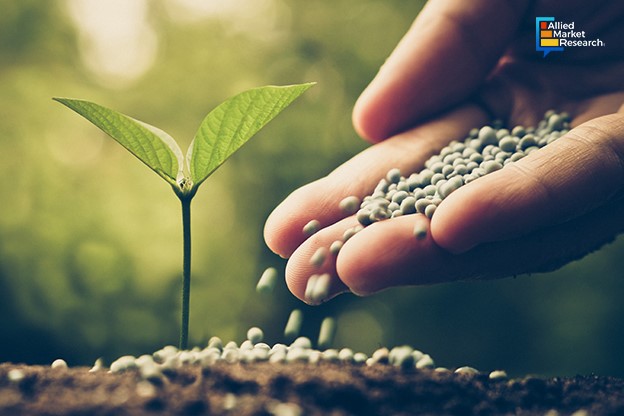Next-Gen Fertilizer Catalysts Boosting Climate-Resilient Farming

9 May
2025
Highlights:
- An introduction to fertilizer catalysts
- A look into popular catalysts used in agriculture
- Diverse use cases of these chemical substances
- Key developments by industry leaders
Fertilizer catalysts are essential components in the production of modern fertilizers, enabling efficient chemical reactions thereby increasing yield, reducing costs, and supporting sustainable agricultural practices. With rise in demand for food globally and surge in environmental concerns, many fertilizer manufacturing companies have started incorporating new technologies and applications.
A brief on fertilizer catalysts
Fertilizer catalysts are substances that are added to accelerate chemical reactions during fertilizer manufacturing without getting consumed in the process. They are essential for synthesizing key nutrients such as nitrogen and phosphorus, making them readily available to plant roots. This leads to increased nutrient uptake, enhanced plant growth, and potentially higher yields. Advanced catalysts enable the production of slow-release fertilizers, which minimize nutrient runoff and environmental pollution, supporting sustainable and eco-friendly farming practices. In addition, innovations in catalyst technology reduce energy consumption and greenhouse gas emissions during fertilizer production, aligning with global efforts to promote food security and environmental sustainability.
Advanced catalysts for low-carbon fertilizer solutions
Iron-based catalysts remain central to ammonia production through the Haber-Bosch process, enabling nitrogen and hydrogen conversion into ammonia for nitrogen fertilizers. Recent advancements, such as nanostructured iron particles and alkali promoters, enhance catalytic activity by 15-20%, reducing energy consumption by 10-15% while maintaining stability under high-pressure conditions. These optimizations lower production costs, support sustainable agriculture by minimizing carbon footprints, and ensure reliable global fertilizer supply chains despite evolving environmental regulations.
On the other hand, ruthenium-based catalysts have become popular as advanced alternatives for ammonia synthesis, as they operate efficiently at lower temperatures and pressures, drastically cutting energy consumption and greenhouse gas emissions. In addition, precious metals such as platinum and rhodium play an important role in converting ammonia into nitric acid and urea, which are essential components of modern fertilizers. These innovations improve process efficiency and contribute to more sustainable & environmentally friendly fertilizer production.
Catalyst technology and precision agriculture for sustainable farming
The fertilizer catalyst industry has witnessed prominent growth in the last few years due to the diverse applications of these chemical substances. Catalysts are essential in the industrial synthesis of ammonia through the Haber-Bosch process and its subsequent conversion into urea, both of which are foundational sources of nitrogen in fertilizers. Recent advancements, such as Clariant’s CLARITY Prime, an AI-powered digital service for syngas plants, utilize AI and real-time plant data to optimize catalyst operations, increasing the efficiency of urea and ammonium nitrate production while reducing emissions. These innovations boost fertilizer yields and support more sustainable and environmentally friendly manufacturing practices.
Moreover, precision agriculture utilizes customized catalyst blends and data-driven nutrient management, which enables farmers to apply fertilizers with greater accuracy, targeting the specific needs of different crops and soil types. This approach ensures that plants receive optimal nutrient levels, which maximizes crop yields and reduces resource waste. In addition, it minimizes environmental harm by preventing over-application and nutrient runoff, promoting sustainable farming practices that balance productivity with ecological responsibility.
PepsiCo and Yara joined forces to decarbonize European agriculture
In July 2024, PepsiCo Europe, a major food and beverage company and Yara, a global leader in crop nutrition, ammonia and essential industrial solutions, entered a long-term partnership to help decarbonize the food value chain by supporting farmers across Europe with sustainable crop nutrition solutions. Through this collaboration, farmers gain access to Yara’s advanced fertilizers, expert agronomic advice, and precision farming tools to improve nutrient use efficiency, boost yields, and cut crop-related emissions. Under this agreement, Yara is expected to supply up to 165,000 tons of fertilizer annually to PepsiCo by 2030, covering about 25% of its European needs. This includes Yara Climate Choice fertilizers, made from renewable or low-carbon ammonia, and premium nitrate-based fertilizers with a significantly reduced carbon footprint.
The crux
Fertilizer catalysts are transforming modern agriculture by making fertilizer production more efficient, sustainable, and responsive to global food security needs. With ongoing research and technological advancements, these catalysts are likely to play a key role in overcoming various challenges in crop production while protecting the environment.
To know more about the upcoming trends in the fertilizer catalyst industry, feel free to reach out to our esteemed analysts today!

Rosy Behera
Author's Bio- Rosy Behera holds a bachelor’s degree in Electrical and Electronics Engineering and now she is a content writer by profession. She loves to portray her thoughts and ideas with a nice command of words. Grabbing an audience with her creative write-ups is one of her biggest assets so far. Apart from writing, she is a certified “Odisi” dancer and has done Gardharva in Drawing, Painting, and Arts. She always explores new things through travel and is a big foodie.
Avenue: Entire Library membership of Allied Market Research Reports at your disposal
- Avenue is an innovative subscription-based online report database.
- Avail an online access to the entire library of syndicated reports on more than 2,000 niche industries and company profiles on more than 12,000 firms across 11 domains.
- A cost-effective model tailored for entrepreneurs, investors, and students & researchers at universities.
- Request customizations, suggest new reports, and avail analyst support as per your requirements.
- Get an access to the library of reports at any time from any device and anywhere.
Related Post
-
How are Submarine Cables Transforming Global Connectivity with Enhanced User Experience?
-
Endoscopy Procedures: Transformations in Techniques and Applications
-
AI-Powered Video Analytics: How the Product Actually Works for enterprises
-
Painting Robots: Transforming Precision Coating and Creative Applications
-
Innovations in Pharmacovigilance Systems Advancing Patient Safety
-
Understanding Edge Security: Keeping Data Safe Near the Source
-
Exploring the Use and Advancements of 3D Laser Scanners in Professional Applications
-
Reinforcing Industrial Controls with Smarter Tools and Training








